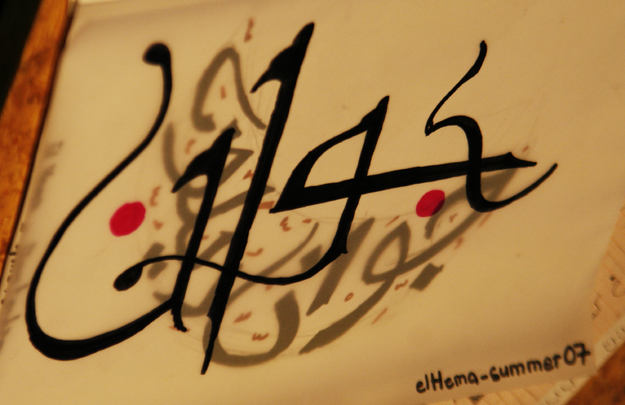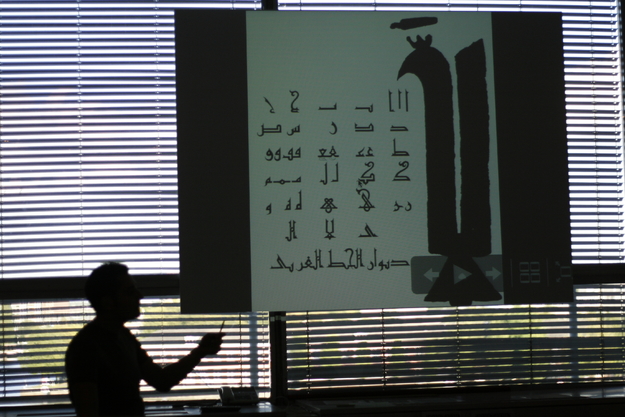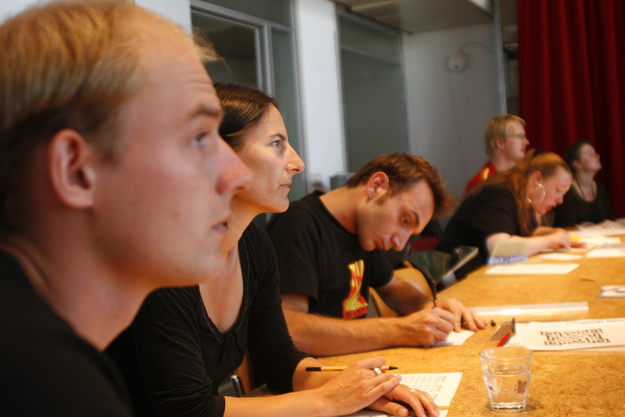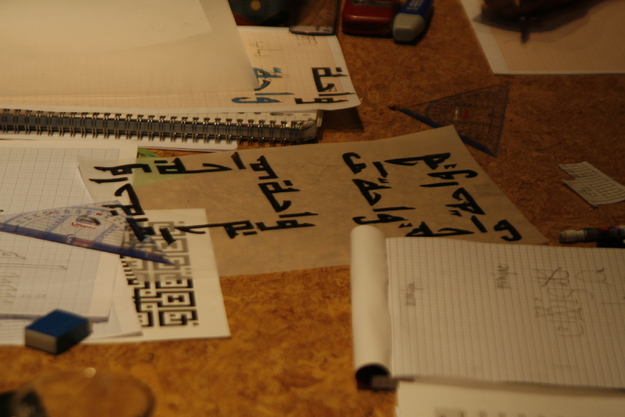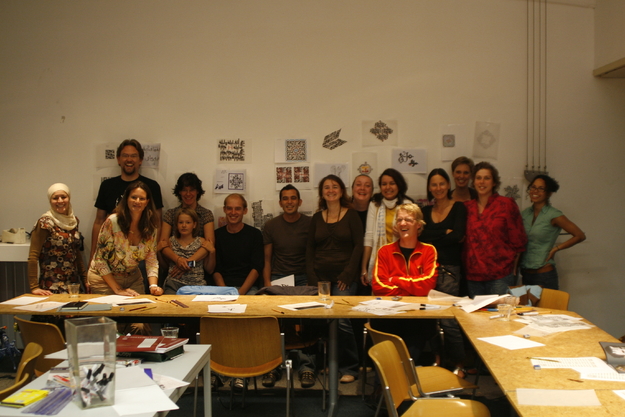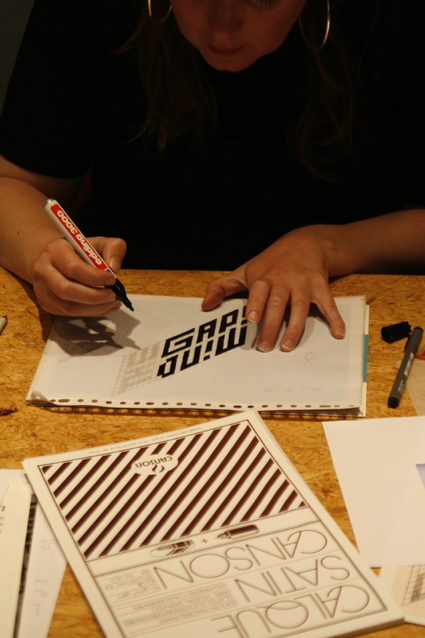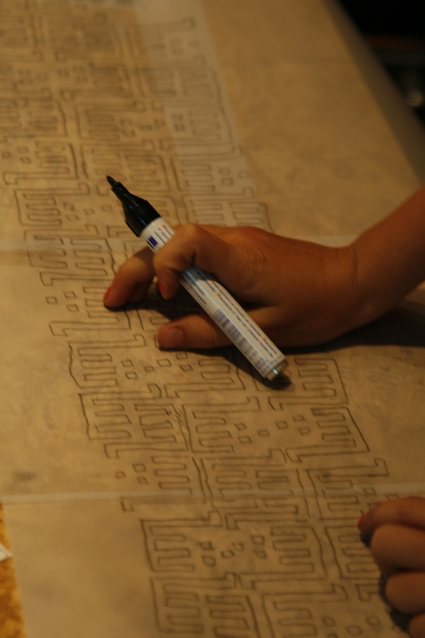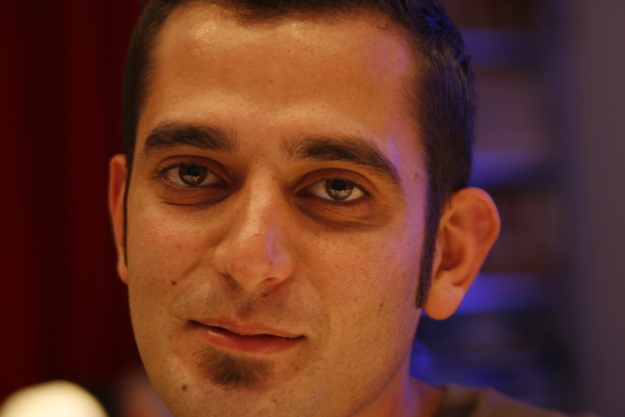The workshop was just one of the many events scheduled as part of the El Hema exhibition, which opened last Friday and will continue until November 4.
“I wondered what could be done with people who didn’t know Arabic,” Zoghbi said at the end of the workshop. “This proves even if you don’t know Arabic, nice patterns can still be made.”
Zoghbi is one of the 10 graphic designers who worked on the Typographic Matchmaking project, which was the basis for the El Hema exhibition. Zoghbi worked closely with typographer Martin Majoor to create the Seria/Sada font on display.
Approximately 17 students of varying ages and exposure to Arabic were given a brief yet thorough introduction to the Arabic language and script. Zoghbi explained to students that the Arabic alphabet consists of 29 different letters, but only 17 basic shapes. The shapes change depending on the position of the diacritic dots, or accents, which are used for pronunciation. Non-Arabic people tend to see only beautiful patterns, but Arabic-speakers can read the letters and words in the patterns, he further explained.
“It may look very complex but it’s not,” Zoghbi encouraged. “Once you know the basic shapes of the letters it becomes easier.”
Since the first evening, the batch of students showed enthusiasm and proficiency with the square kufi style that on the second day Zoghbi introduced the participants to geometric floral kufi, a more complex and beautiful style. Graphic designers Khajag Apelian and Wael Morcos, two of the five graphic design interns who helped design the El Hema exhibit, also assisted Zoghbi in guiding students with their patterns.
Frerik Kampman, who said he had never experimented with kufi before the workshop but is interested in the language and the Arabic culture, was one of the most accomplished students in the class. Kampman created impressive, colorful patterns of his name in square and floral kufi. One design in particular included a pattern that incorporated the full names of all the members of his immediate family.
“I like it. It’s fun,” Kampman said. “It’s art, drawing, typography and it’s mathematical.”
During his first time experimenting with kufi, Councilman Marco de Goede said he had seen mosaics before, but it was nice to finally understand the explanation behind the patterns.
“Arabic is not that hard to decipher once you know the language,” De Goede said.
Monique van Waes and her 11-year-old daughter Inge van Dieen also practiced kufi for the first time at the workshop. Van Waes, who runs a bathroom tile store in Amsterdam, said she’s interested in architecture and calligraphy and will now try to incorporate the kufi style into her tiles.
“The first translation is difficult because not every letter is another letter in Arabic. You can’t say an ‘o’ is an ‘o,’” she said. “It’d be too difficult to translate, but it’s a nice pattern to design.”
Throughout the two days, Van Waes’ daughter Inge busily worked on colorful square kufi patterns of her name and names of friends. She said she wanted to turn her patterns into beaded patterns, which she would iron together and make decorations for her bedroom door.
“It’s a beautiful culture,” Kampman said. “If you want to understand the culture, you have to understand the language.”
